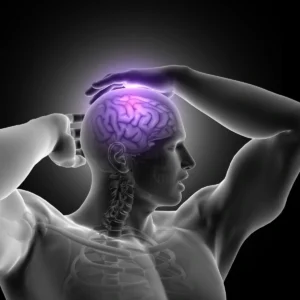Specialist Pablo Arrondo discusses in this article stress from a physiological. Specifically, he explains the defense system for facing aversive stimuli, in which physiological responses occur that produce changes in neuronal mechanisms.
Hypothalamus, depression, glucocorticoid receptors, cortisol, corticosterone, adrenals
Throughout evolution, animals have developed a defense system to cope with aversive stimuli, in which a series of physiological responses occur that produce changes in neuronal and endocrine mechanisms that allow the organism to remain in homeostasis (McEwen, 2008).
Two main physiological mechanisms occur:
- On one hand, the sympatho-adrenomedullary axis (SAM) responds very quickly to stressors, since it involves the sympathetic nervous system and the adrenal medulla. An example of its response capacity is that the heart rate can double after the stimulus, preparing the organism for a threatening situation. In this stress response, neurons of the paraventricular nucleus of the hypothalamus, the solitary tract, and the locus coeruleus of the brainstem are activated. The neurons of these structures release adrenaline and noradrenaline (catecholamines) that reach the cells of the organs activated by the sympathetic system, so that adaptive fight-or-flight functions, for example, are intensified (Guyton & Hall, 2005).
- On the other hand, the Hypothalamic-Pituitary-Adrenal axis (HPA), in which neurons of the paraventricular nucleus of the hypothalamus have axons that project to the median eminence, where corticotropin-releasing hormone (CRH) is secreted. This, in turn, stimulates secretion by the adenohypophysis (pituitary) of adrenocorticotropic hormone (ACTH). ACTH targets the adrenal cortex (fasciculata and reticular), located near the kidneys, which secrete glucocorticoids in animals (Morén, 2007) and cortisol in humans (Gómez & Escobar, 2006). This hormone will provide the body’s organs with more energy by adequately maintaining glucose levels.
Later, the cortisol produced in the adrenal cortex negatively feeds back on the system by inhibiting the hypothalamus and the pituitary by binding to glucocorticoid receptors present in the brain (McEwen, Weiss, & Schwartz, 1968).
Glucocorticoids (cortisol or corticosterone) also bind to mineralocorticoid receptors (MR) that are more present in the limbic structures of the brain than GRs. The latter are more present in other areas of the central nervous system (Chao, Choo & McEwen, 1989; Van Eekelen, Jiang, De Kloet., & Bohn, 1988).
MRs have much greater binding capacity for corticosterone or cortisol, approximately 10 times higher than that of GRs (Reul & De Kloet, 1987). Therefore, under normal conditions, the former are already activated, and when a large amount of cortisol is released, it then activates the GRs that are responsible for inhibiting the synthesis of CRH and ACTH.
The system returns to the basal state, prepared for another stressful situation. When stressful stimuli are prolonged over time the negative feedback system ceases to function properly and can trigger a physical or psychological disorder (Jimenez, Gutierrez, Dominguez & Contreras, 2008).
Stress and major depression
Stress and major depression share many characteristics, since the brain structures and pathways involved in each process are similar (Gold and Chrousos, 1999). In addition, it has been observed that some depressed patients increase the size of the adrenal glands (Montes, 2004), which are involved in the production of glucocorticoids due to stress, as well as in experimental animals (Grippo, Francis, Beltz, & Johnson 2005; Rygula, Abumaria, Domenici, Hiemke & Fuchs, 2005).
It is important to know which factors related to stress are indicators of vulnerability to the development of diseases. For example, stressful events in childhood can indeed lead to illness in adulthood (McCrory, De Brito & Viding, 2012; Bremme & Vermetten, 2001; Heim & Binder, 2012).
Furthermore, the way each situation is coped with can be a determining factor in the development of future illnesses. Thus, for example, a passive coping strategy is a risk factor for major depression and an active strategy is a risk factor for cardiovascular diseases (Koolhaas, 2008).
If you liked this post about stress from a physiological perspective, you might be interested in these NeuronUP posts:
“This article has been translated. Link to the original article in Spanish:”
Estrés, perspectiva fisiológica






 Activity to alphabetically sort words
Activity to alphabetically sort words
Leave a Reply